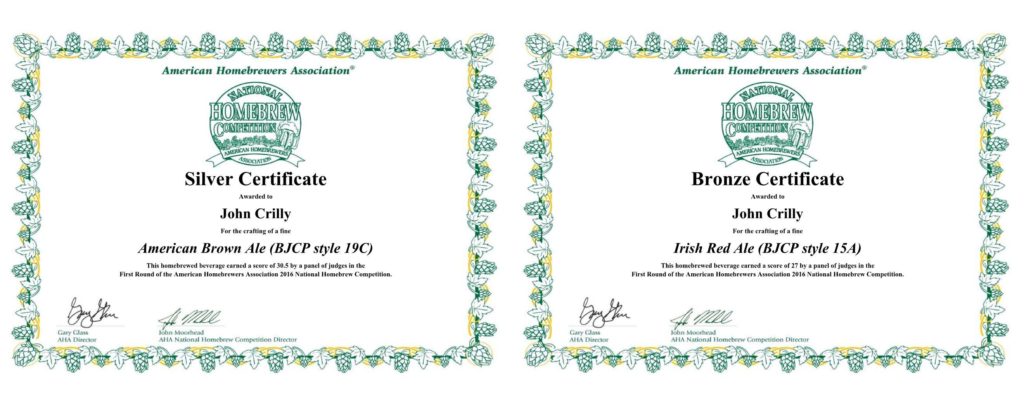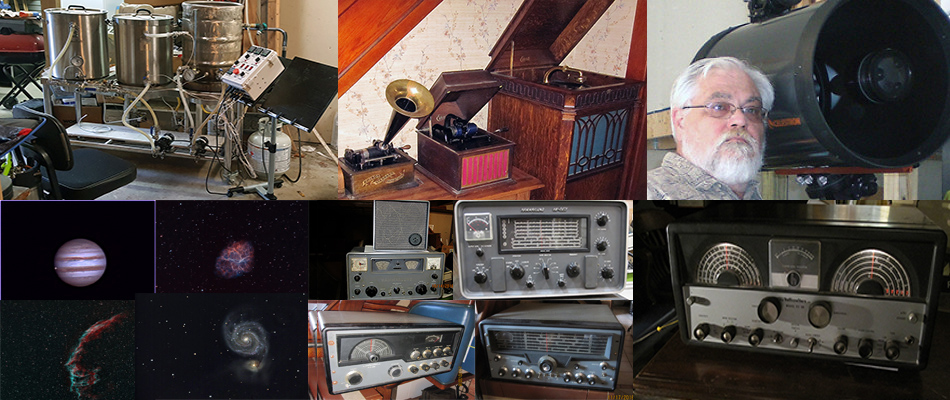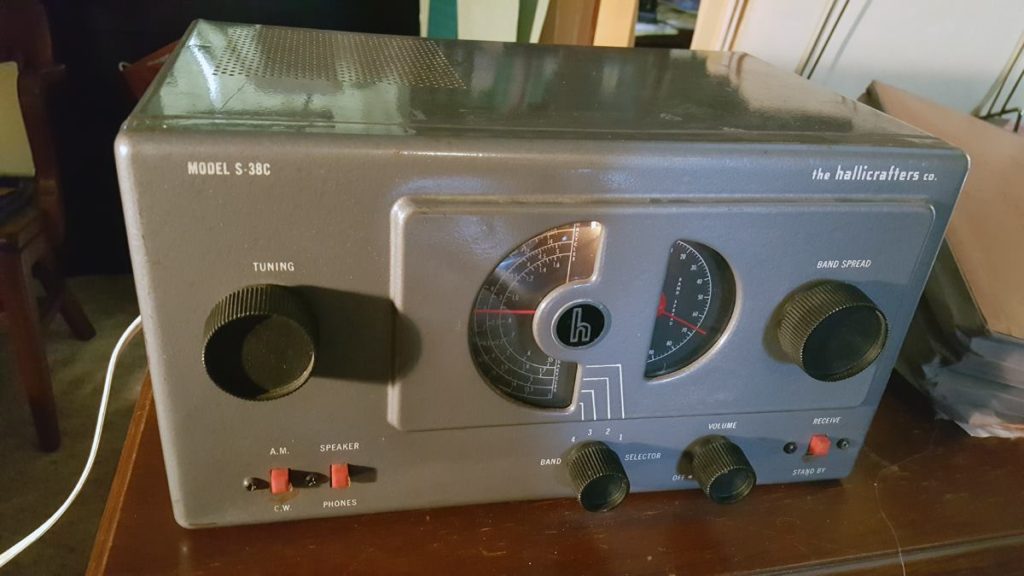
The header image above shows the result of my NHC entries last year. Not very impressive, but gratifying nonetheless. I hadn’t brewed anything specifically for the event and just chose a couple of beers I had on hand to submit. I hope to do a little better this year, as I brewed a couple of my favorite recipes for this event. I don’t expect to place, but I do hope for significantly higher scores.
One is not my own recipe, but is a slightly modified version of a recipe I have brewed again and again. It is based upon a Russian Imperial stout by Annie Johnson. I like it too much to fiddle with the recipe extensively but I did substitute Crisp Maris Otter malt for the original base grain of American pale ale malt. It is a big beer; uses 32 pounds of malted grains to make 10 gallons and comes out with over 10% abv. It has a big stout flavor, though (especially when brewed with the Maris Otter), and that balances the high abv. I call it Black Hole Russian imperial stout.
The other submission is my own recipe and is a more conservative beer. It is a chocolate porter, the result of many iterations in search of one that I can both enjoy and call my own. The chocolate flavor comes entirely from the grains selected; no chocolate, cocoa, or flavoring added. I’ll even share the secret that made this batch the final version: I replaced about half of the usual chocolate malt with chocolate rye malt. I don’t usually like the taste of rye malt. Fortunately, the roasting process that brings out the chocolate flavor tames the rye “twang” and yields a very smooth, sweet chocolate taste. I prefer it to the bitter flavors of the usual chocolate malts derived from barley. This Dark Nebula porter is around 7% abv and is another balanced brew.
The big issue now is whether they arrive in time to make the submission deadline. For whatever reason, I didn’t get around to shipping until Monday. The required arrival date in Chicago is today. They are scheduled to be there on time but we will see…

![20160526_174035[1]](https://www.lx-850.com/wp-content/uploads/20160526_1740351-1024x576.jpg)
